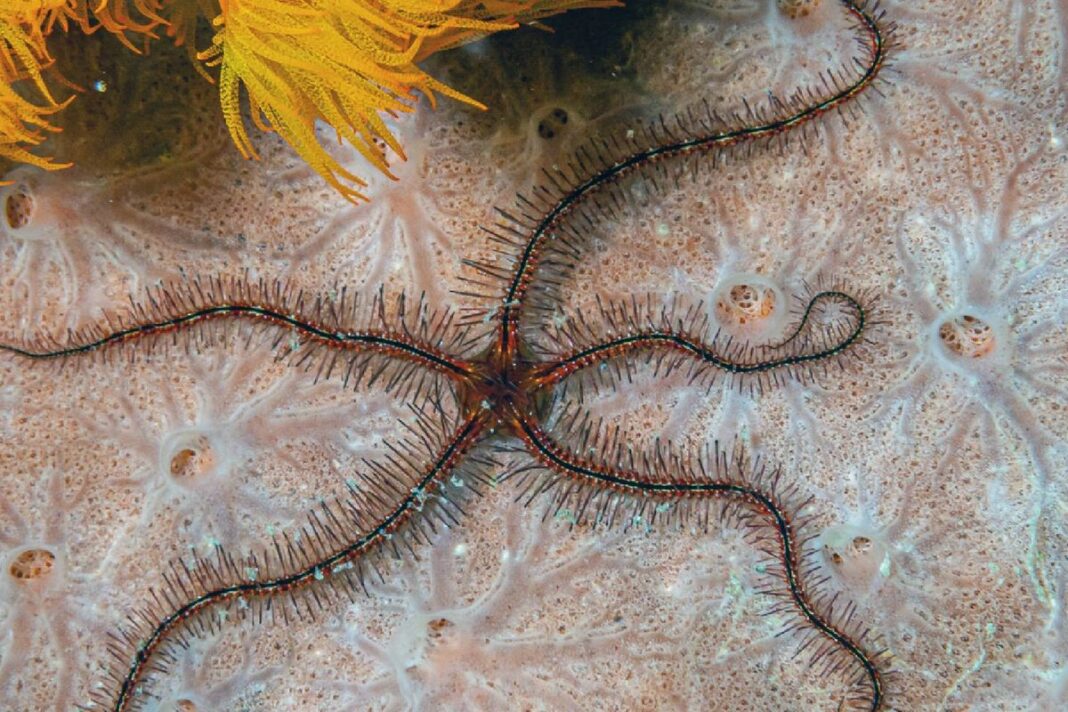A new study that headless animals such as brittle stars can manage to learn through experience without ever having a brain. This allows them to move quickly to escape predators or find food. “There’s no processing center,” said lead author Julia Notar, who spearheaded the new work as part of her biology Ph.
D. in professor Sönke Johnsen’s lab at Duke University. A committee instead of a boss Instead of a brain, these sea critters have nerve cords that travel down each of their five wiggling arms and connect to form a nerve ring near their mouth.
According to the new data, this network is enough for them to learn by association. “Each of the nerve cords can act independently,” she added. “It’s like instead of a boss, there’s a committee.
” This method of learning includes associating various stimuli through a process known as classical conditioning. The process sees the combination of a neutral stimulus with an unconditioned stimulus to generate a conditioned response. This form of learning was first identified and brought to light by Ivan Pavlov, a Russian physiologist, in the late 19th and early 20th centuries.
Throughout the years, classical conditioning has grown to have an important role in behavioral psychology and has been widely used to explain various aspects of both human and animal behavior. It helps us understand how associations between stimuli and responses can be formed through experience. A few prior experiments in starfish had already revealed that the principles of classical conditioning apply to their behavior.
However, most echinoderms, which include brittle stars and similarly brainless sea urchins and sea cucumbers, have not yet been studied. To address this scientific gap, the researchers ran studies on 16 black brittle stars over a period of 10 months. Half of the brittle stars were trained by dimming the lights for 30 minutes before feeding the animals while the other half were fed only under lit conditions.
A learned response When the lights turned down early in the experiment, all the animals remained hidden. But, over time, the half of the animals that were trained to feed in the darkness developed a strong association between lack of light and meals, and they started creeping out of hiding whenever the lights went off. This behavior was observed even before any food was placed in the tanks for them, indicating that they had learned that meals come after darkness.
“Knowing that brittle stars can learn means they’re not just robotic scavengers like little Roombas cleaning up the ocean floor,” Notar said. “They’re potentially able to expect and avoid predators or anticipate food because they’re learning about their environment. ” Now, Notar hopes his research will soon shed light on how these brainless animals manage to learn and recall using a neurological system so dissimilar to our own.
The study in Brittle stars (Class Ophiuroidea), like all echinoderms, lack centralized nervous systems, having instead five radially arranged nerve cords joined by a central nerve ring. Although operant and classical conditioning have been demonstrated in a limited number of studies in sea stars (Class Asteroidea), members of the other echinoderm classes remain relatively untested. We examined whether individuals of the ophiuroid species Ophiocoma echinata were able to learn an association between a period of darkness and the presentation of a food reward.
Ophiuroids in an experimental group were trained by presenting food during a 30-minute period of darkness, while control group animals were fed under regular daytime room lights many hours after a period of darkness of the same duration. After the training period, the experimental group demonstrated they had learned to associate the two cues by regularly emerging during the dark period even when no food was presented. The untrained control animals, as well as pre-training experimental animals, did not emerge during the dark periods when no food was presented.
Once trained, experimental animals emerged significantly more times than control animals during dark periods without food (trained emergences = 109; untrained emergences = 22; χ2 = 64. 65, p = 0. 0007).
This study shows that classical conditioning is possible in a class of animals that lacks a centralized nervous system. .
From: interestingengineering
URL: https://interestingengineering.com/science/headless-animals-manage-to-learn-without-ever-having-a-brain



